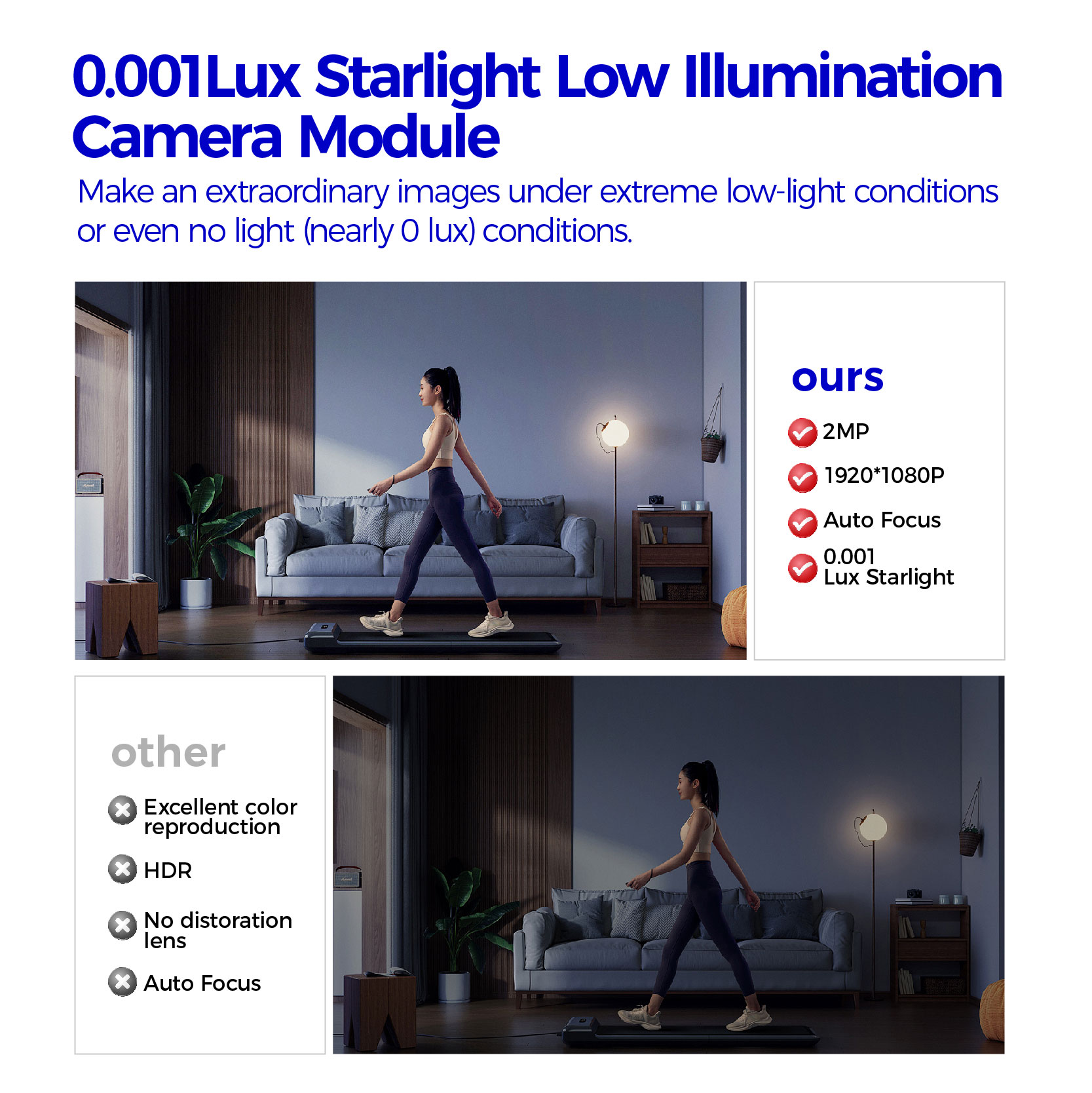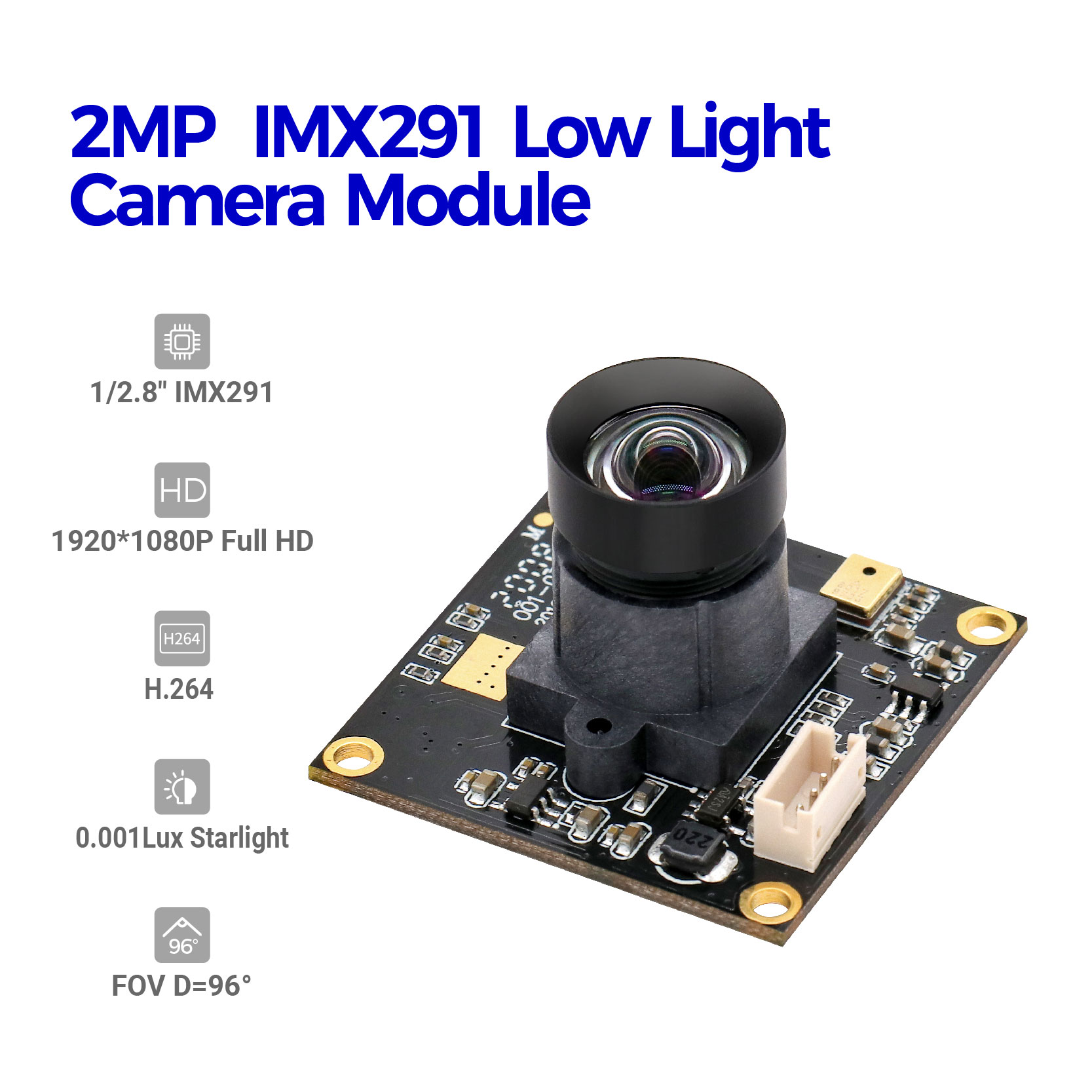What is low light in photography, and what does 0.0001Lux low illumination mean?
Definition
Illuminance is actually brightness, and low illuminance means low brightness, such as a dark room, or lighting with low brightness.
Ambient illuminance (brightness) is usually measured in lux, and the smaller the value, the darker the environment. The illuminance index of the camera is also measured in lux. The smaller the value, the higher the sensitivity and the clearer the objects in the dark can be seen. Therefore, the level of illumination becomes an important parameter for people to choose a camera.
What is Minimum illumination? What is Sensitivity ? What does 0.0001 lux stands for?
Illuminance is the brightness on 1 square meter, unit: Lux, previously written as Lux. The minimum illuminance refers to the illuminance when the human eye can just feel the twilight on the ground. Sensitivity refers to "response to light". There are various sensitivities, human eye sensitivity, negative film sensitivity, and photosensitive tube sensitivity. Home lighting, generally 200Lx, 0.0001Lx means very, very dark, the human eye can no longer feel the light.
Minimum illumination is a way to measure the sensitivity of a camera. It is used to determine how low can the illumination be and still produce a usable image. This value has been widely misinterpreted and misstated as there is no industry standard for describing lux values. Each major CCD manufacturer has their own way of testing the sensitivity of their CCD cameras.
The most effective and accurate way to measure minimum illumination is called target illumination. Target illumination tells us how much light is actually received by the imaging plane of the camera where CCD surface is located.
From the format, judging low-light performance is related to at least two parameters, the F value of the lens and the IRE value:
F value
It is a method to measure the ability of the lens to collect light. A good lens can collect more light and radiate it to the CCD sensor. The F1.4 lens can collect 2 times the light than the F2.0 lens. In other words, The F1.0 lens can collect 100 times more light than the F10 lens, so it is very important to mark the F value in the measurement, otherwise the results will be meaningless.
IRE value
The maximum amplitude of the video output of the camera is generally set at 100IRE or 700mV. A 100IRE video means that it can fully drive a monitor with the best brightness and contrast. A video with only 50IRE means only half the contrast, 30IRE or 210mV Volts means only 30% of the original amplitude, usually 30IRE is the lowest value to express the available image, a standard camera when the automatic gain is increased to the maximum gain, the noise level should be at 10IRE, so it can provide a 3:1 or 10dB signal-to-noise ratio acceptable images. A result measured at 10 IRE can be 10 times higher than a result measured at 100 IRE, so a result without an IRE rating is practically meaningless. When the ambient illuminance decreases, both the video amplitude and the IRE value decrease accordingly. When examining the low-light performance of a camera, the IRE value may be low, but it must be ensured that the displayed video is still meaningful. After understanding the parameters of low illumination of the image, what are the levels of low illumination?
What is the Low light mode in the camera?
Low Light refers to the low-light shooting mode. Low illumination refers to the situation where the light in the shooting environment is relatively dark. In this case, if the normal shooting mode, the picture will be blurred. In order to improve the low-light performance of the camera in the dark, major brands are making efforts in the following directions. Lens: As an important part of the camera, it is the first entrance for light to enter the camera, and the amount of light it absorbs directly determines the clarity of the image. Usually, the amount of "incoming light" is used to measure the ability of the lens to absorb light, and the amount of light entering the lens can be expressed by the F value (stop coefficient). F value = f (lens focal length) / D (lens effective aperture), which is inversely proportional to the aperture and proportional to the focal length. Under the condition of the same focal length, if you choose a lens with a larger aperture, the amount of light entering the lens will increase, that is, you need to choose a lens with a smaller F value.
The image sensor is the second entrance for light to enter the camera, where the light entering from the lens will form an electrical signal. At present, there are two mainstream sensors, CCD and CMOS. The manufacturing process of CCD is relatively complicated and the technology is monopolized in the hands of several Japanese manufacturers. Features of low cost, low power consumption and high integration. However, with the continuous development of CMOS technology, the gap between CCD and CMOS is gradually narrowing. The new generation of CMOS has greatly improved the lack of sensitivity and has become the mainstream in the field of high-definition cameras. Low-light network high-definition cameras basically use high-sensitivity CMOS sensors. In addition, the size of the sensor will also affect its low-light effect. Under the same lighting conditions, the smaller the size, the worse the low-light effect of a camera with higher pixels.
If you are interested in Hampo 03-0318 star level low light camera module, welcome to consult with us!
Post time: Mar-24-2023







